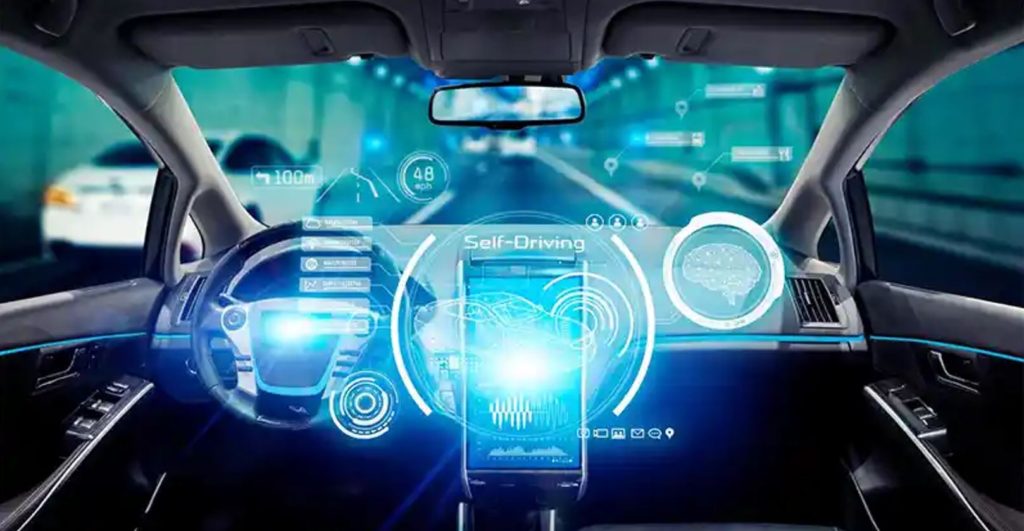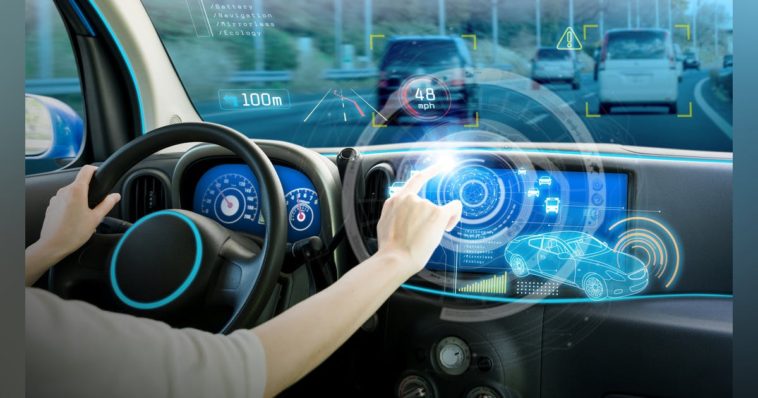Car automation, sign recognition, and Internet connectivity have been applied together to give cars functions that were unimaginable not so long ago.

Have you ever heard of Internet of Things?
In a few words, IoT is the concept of applying Internet connectivity to everyday objects such as a radio or a coffee maker to integrate them with the other appliances you may have and create new possibilities such as automating their operation – in that case, you could wake up to your favourite music and the smell of coffee without doing a thing.
When it comes to cars, the same concept has been used with more resources and, as a result, has brought more numerous and more impressive results. Their “technology of things”, so to say, uses built-in cameras and satellite navigation along with Internet connectivity to offer functions that make us wonder how we were able to use cars daily before they were invented.
This article is going to mention the most used technologies for that end, along with some of the new functions they make possible to offer. Besides that, it is going to focus on car tracking systems because they provide dynamic monitoring, which is simply essential for the car’s ECU to better understand its surroundings and plan the best driving parameters to proceed with the trip.
What are those functions?
Cameras were first adopted to help drivers park the car by showing its surroundings in real-time. Nowadays, some cars also use them to scan traffic signs as they are passed: in case of a speed limit, for example, a warning sign begins to appear on the dashboard; curve signs are saved on the same place to remind the driver, and so on. But this is only one of the available resources.
Internet and telephone connections are used for much more than navigation and music streaming. Latest cars also offer a concierge service, where they can request recommendations of places to go, schedule appointments, and ask for directions, as well as an emergency response: after a collision, the car automatically calls the emergency number and sends vital information such as its location.
Even more functions, though, maybe performed by the GPS. Cars have been able to scan the road ahead and use that information to adjust driving parameters like shock resistance and ride height; hybrid cars use it to plan how to manage fuel and energy consumption; some models also detect when you enter a tunnel to open the windows and facilitate the recirculation of air inside the cabin.
Why is car security so helpful?
Because it is a way of collecting information. Modern cars collect as much non-private information as possible about the road ahead, the occupants’ condition, and its own status indicators. Parallel to that, it is important to have parts whose operation can be customized, such as dual-zone climate control or variable valve timing. The next step is using that information to coordinate their work.
Car trackers are particularly important for reducing car theft and monitoring locations. Trackers improve fuel efficiency in cars by monitoring driving behaviour and promoting smoother driving, detailed reports can be retrieved from the tracking software and alerts sent when the vehicle is stolen.
Naturally, developing such systems takes high investments of time and money. Automakers usually start offering them on their flagship models to attract attention, then gradually trickle them down to their more affordable options to increase demand for their products and drive down their production cost. Those systems have become present in more and more car models lately.
What can we expect from now on?
The fact that even Alexa has found its way to cars says a lot. It was easy to figure that connecting objects of everyday use would be massively embraced by consumers because it makes life easier. It simplifies their operation, whether through automated routines or simply through voice activation, and opens possibilities of all-new functions. In short, it’s a practical execution of pure synergy.
Vehicle tracking systems play a major role here for the simple reason that, unlike that lamp or that coffee maker, a car moves; the information they provide can be used in virtually countless ways to improve a car – and that is why the cars have become safer, more comfortable, and more efficient than ever while also making all those new functions easy and intuitive for everyone to operate.
Nevertheless, it is important to keep in mind that none of that replaces continuous attention from the driver. Self-driving is a totally different technology that is in a totally different development stage. Electronic systems such as the ones mentioned here are focused on assistance, that is, on making the driver’s work easier and more effective, rather than attempting to do it themselves.


